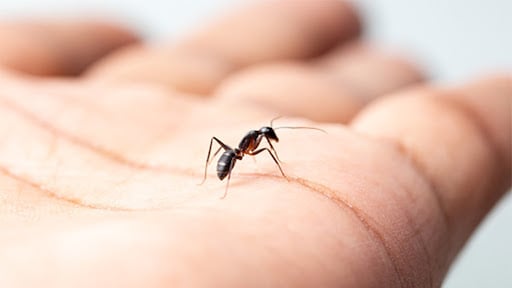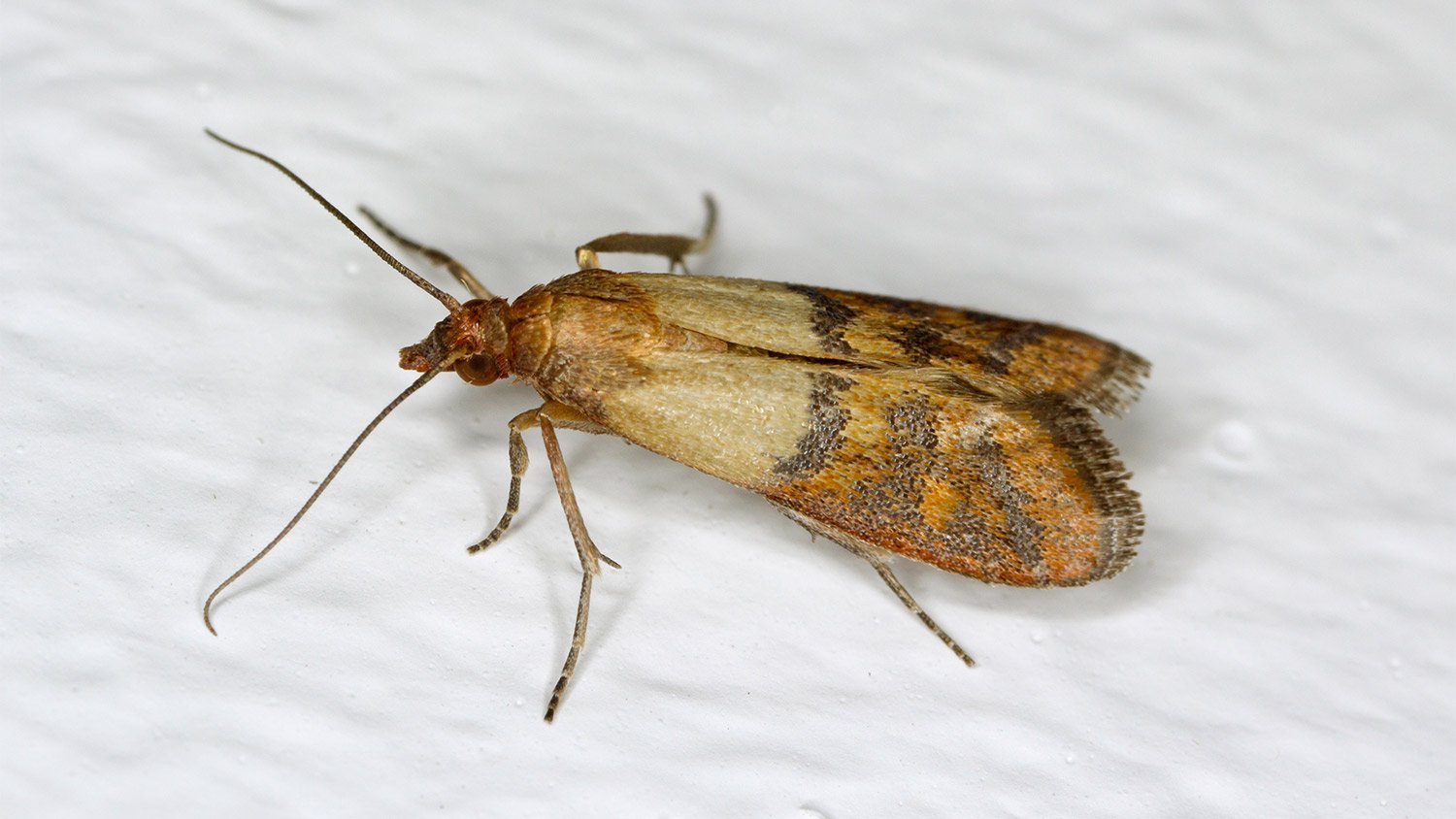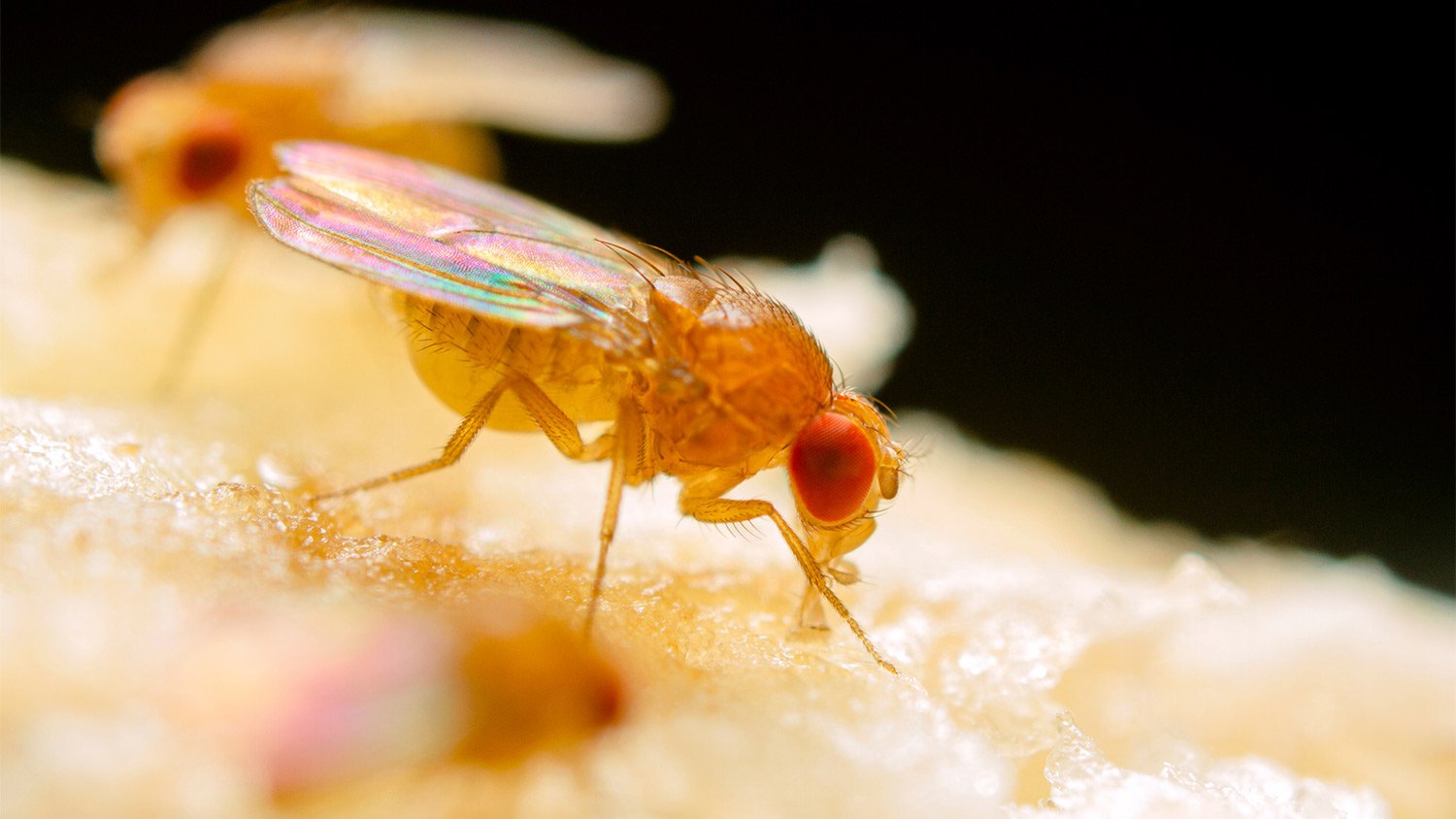
How much does a gnat exterminator cost? The answer depends on the method of treatment and the level of infestation. Find out what plays into your budget.
These common pests can really ruin an appetite


American kitchens are susceptible to all manner of invasive insect species, from cockroaches to grain-loving moths.
The most common kitchen bug is the German cockroach.
Prevention starts with making a proper identification and following some common sense sanitation guidelines.
Keep your kitchen clean, your sink dry, and any food sealed away in airtight containers.
Vacuum floors regularly to suck up larvae and keep garbage in a sealed trash can.
They say nothing ruins a picnic like ants, well nothing ruins a kitchen like cockroaches and any of their creepy-crawly cousins. Who wants to concoct culinary creations with pantry pests mucking up the place? Before you call a local exterminator, it is helpful to learn the exact identity of those insects lurking in your sink and near your bulk grains.
Here is a list of common kitchen bugs, identifying them, and, most importantly, preventing them from setting up shop.

Ah, the insidious and uber-common German cockroach. This type is arguably the most common cockroach in the entire world, and they absolutely adore kitchens, in addition to basements, bathrooms, and other damp areas of the home. They are found everywhere in the country, so no home is safe. What attracts cockroaches to the home? Food crumbs, dirty dishes, and moisture, to name a few. Additionally, German cockroaches reproduce faster than any other breed, so keep your favorite pest control company on speed dial.
How to identify them: German cockroaches are oval-shaped and range from light brown to tan. Look for two dark stripes on the back, six legs, and multiple antennae. Incidentally, German cockroaches have wings and fly on occasion, which could help identify them.
How to prevent them:
Dry your sink out before going to sleep, and don’t let dirty dishes pile up.
Check sink strainers for errant crumbs.
Empty your trash cans regularly and keep them clean.
Clean appliances and remove food crumbs and grease.
Keep food (even pet food) stored in airtight containers.
Some swear by certain natural herbs, such as bay leaves, peppermint, and even catnip, to repel these roaches, but the results vary.

American cockroaches are huge, the largest of any household roach. Much like German cockroaches, they like moisture and humidity, so bathrooms, basements, and kitchens are their go-to vacation spots. American cockroaches congregate throughout the country, though they are most active in weather above 70 degrees Fahrenheit.
How to identify them: Size is the main identifier here. American cockroaches grow to over 3 inches long. Other tell-tale identifiers include a reddish-brown color and a yellowish figure-eight pattern, or yellow band, on the back of the head.
How to prevent them:
Keep your kitchen clean, so follow the above steps for German cockroach prevention.
Vacuum your kitchen floor regularly to suck up any egg sacs.
American cockroaches need shelter, so remove access to any potential hiding spots, including cardboard boxes and paper grocery bags.
Seal up any potential entryways to your kitchen. Make sure windows and doors are free from cracks and have weather-stripping.

Unlike other common cockroach breeds, the brown-banded cockroach loves dry air and high parts of the home. In other words, the sink is not their favorite place, though they will happily take up residence in your kitchen cabinets. This breed has been infesting American kitchens for over 100 years and has spread to every part of the country.
How to identify them: Well, as the name suggests, look for a brown color and a pronounced banding across their wings. The body is a darker brown, while the banding is a lighter shade of brown.
How to prevent them:
Brown-banded roaches don’t need a damp part of the home to survive. They thrive in furniture, behind picture cases, and even within the electrical components of common kitchen appliances. Conduct a thorough search at night for evidence of an infestation.
As with any cockroach, keeping a clean home is key to preventing an infestation. Don’t leave your kitchen trash out overnight unless in a sealed container. Vacuum often, and store dried foods, like cereal, in an airtight storage vessel.
Brown-banded cockroaches are susceptible to roach baits, so consider investing in some quality bait products to get rid of these roaches.

There are dozens of ant breeds known to infest kitchens, but the big three are odorous house ants, Argentine ants, and pavement ants. Odorous house ants love sugary foods, while Argentine ants and pavement ants go for meats, bread, oils, and just about anything else you like to eat, too. All three species commonly nest around moisture sources, including wall voids near water pipes and fixtures under the sink. If you’re looking to kick ants out of your home, checking there first is a great idea.
How to identify them: See that trail of ants marching one-by-one near your sink? Your kitchen likely has an issue with one of these species. Ants are usually black, brown, or red, stretch up to half an inch in length, and boast six legs and multiple antennae.
Also, there is a gross reason odorous house ants received that moniker. They emit a foul odor many describe as rotten coconut when you crush or step on them.
How to prevent them:
Don’t leave pet food unattended in bowls for long periods of time. Ants are not picky.
Keep the sink dry and patch up any leaks as soon as possible.
A clean kitchen is a happy kitchen. Regularly vacuum, disinfect countertops, wipe down your oven, and conduct other common cleaning tasks.
Many believe that spraying diluted oils, like peppermint oil and lemon oil, around the kitchen wards off some ant species.
Seal up any crevices and other potential entryways with caulk.
Keep food in an airtight and sealed container.

Where there is food, there are insects, packaged dry goods included. The most prevalent pantry-loving pest is the Indian meal moth. However, there are dozens more, including sawtoothed grain beetles, drugstore beetles, rice weevils, mealworms, flour beetles, warehouse beetles, and more.
These pests all look different, but they share behavioral characteristics. No matter which type infiltrated your foodstuffs, a bug in the flour is never a welcome sight. Pantry pests typically get in your dry food items at the factory or warehouse, entering your home via your grocery purchases, where they thrive and eventually branch out to other items in your kitchen.
How to identify them: The best way to identify any of these pantry insects is by inspecting the food itself. Pour rice or cereal out of the packaging and into a sifter, going through the grains with your hands, looking for larvae, webs, or anything unusual.
How to prevent them:
You can’t control food storage warehouses, but you can control your kitchen. If you notice even the slightest trace of these bugs, throw away the infected food item immediately. They lay eggs and drop feces in there.
Avoid buying damaged goods, check expiration dates, and stick to grocers you trust.
Keep all of your dried food items in sealed airtight containers to prevent cross-contamination.
If you have the room, place grain containers in the freezer for a reasonable amount of time to get rid of pantry moths.

There are over 120,000 fly species, but there are two that wreak havoc in your average kitchen. Fruit flies and drain flies eat your food, reproduce like crazy, and make a general nuisance out of themselves. Fruit flies sometimes come in with your garden crops, but, more often than not, they sense a food source and fly in through a window or another entrance. All they need is fermentable material, which is the exact definition of ripening fruit.
Drain flies thrive in stagnant or standing pools of water, such as inside your sink drain or even around an unattended glass of water. Both species reproduce at staggering rates, and infestations get out of hand fast.
How to identify them: Fruit flies have noticeably red eyes, no hair, and a striped abdomen. They hover in groups near food, which is the main way to identify them. Drain flies are gray or brown, with plenty of fuzzy hair on the wings. They don’t really fly, per se, so look for short jerky jumps near a water source.
How to prevent them:
Keep the sink dry and clean, immediately removing crumbs and standing water.
Store fruit and vegetables in dedicated containers instead of leaving them out.
Wipe up drink spills as soon as possible and promptly dispose of any overripe produce.
Flushing your kitchen sink drain with a cleaner, or even vinegar, helps with an active colony of drain flies.
We had LHR install a new roof and gutter system. While they were not the cheapest, they were considered the most reliable and fetish for using only high-value products that would last for many years. Additionally, they were highly professional and never tried to push their services or any...
Environmental Pest Control did a wonderful job removing squirrels that were living in our attic, in a safe, environmentally-friendly way. The team was professional and respectful of our home. They gave us an estimate, got to work quickly, and answered all our questions. The squirrels have...
From average costs to expert advice, get all the answers you need to get your job done.

How much does a gnat exterminator cost? The answer depends on the method of treatment and the level of infestation. Find out what plays into your budget.

Find out how much it costs to remove armadillos and stop them from coming back. Know how much to budget to humanely remove these pesky critters from your yard.

Sometimes birds nest in unwelcome places. Find out how much bird nest removal will cost based on factors like location, bird species, and preventative measures.

Learn how to check for bed bugs in your home, what to do if you find them, and how to prevent them from returning in this handy DIY guide.

If your dog brought some unwelcome pests into bed with you, learn how to get rid of fleas in bed before you’re covered in itchy bites.

“Water bugs” typically refer to a type of cockroach. Find out how to get rid of them instantly and keep them away for good in this handy DIY guide.